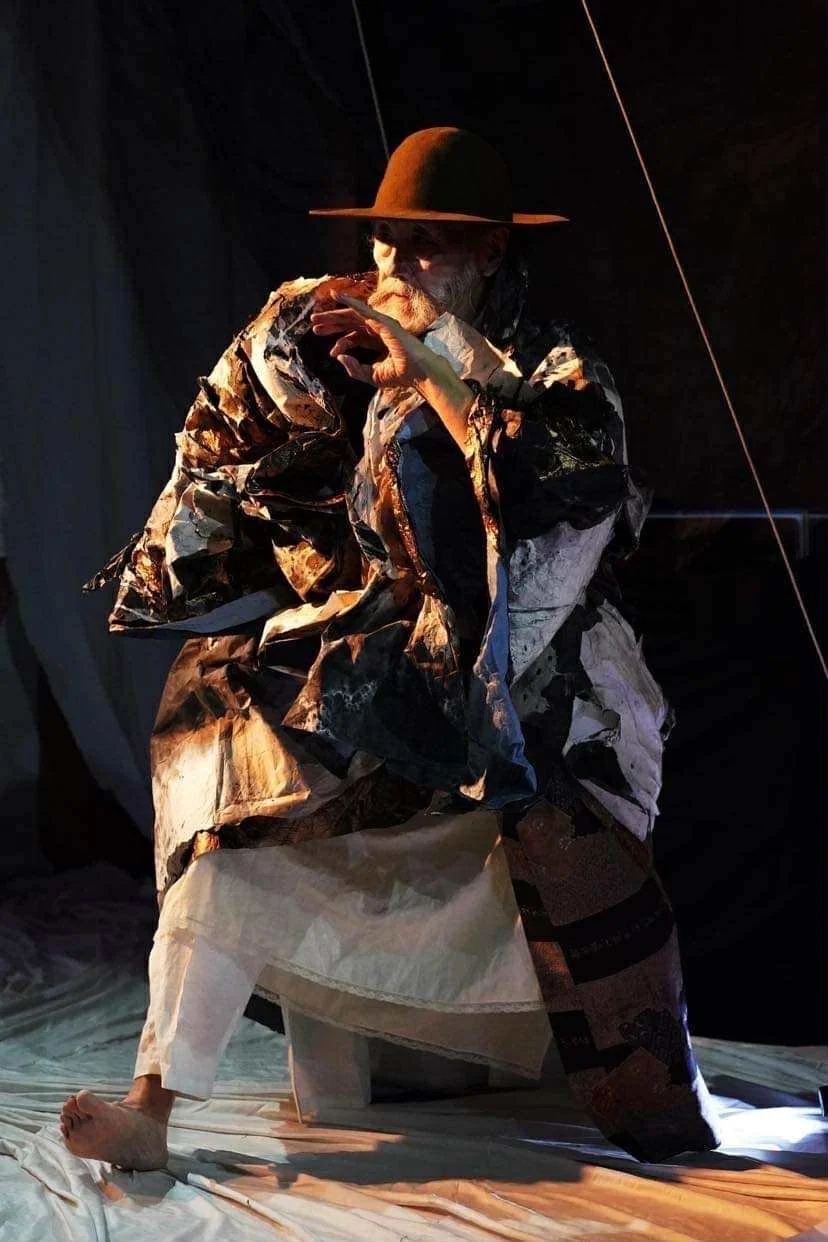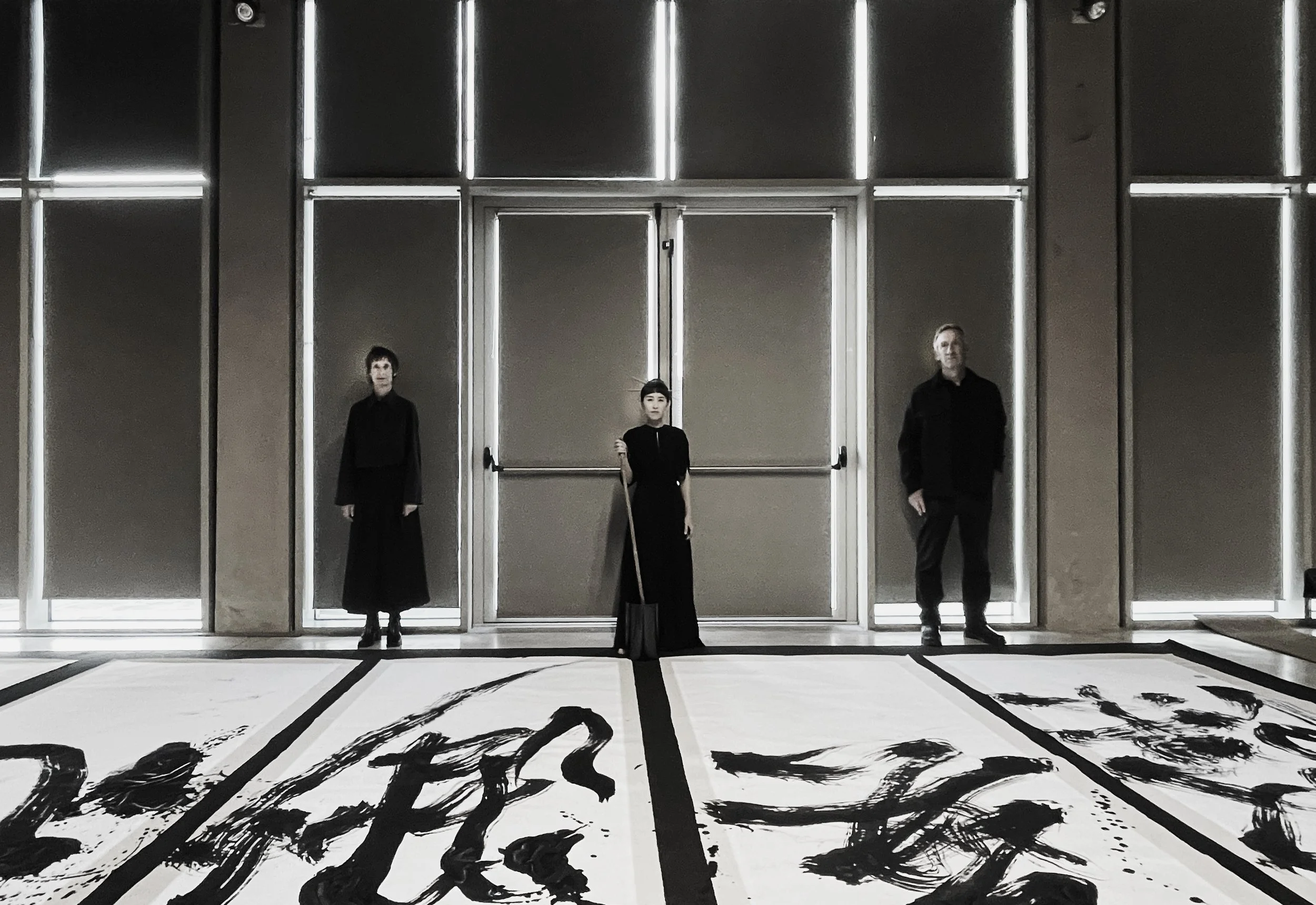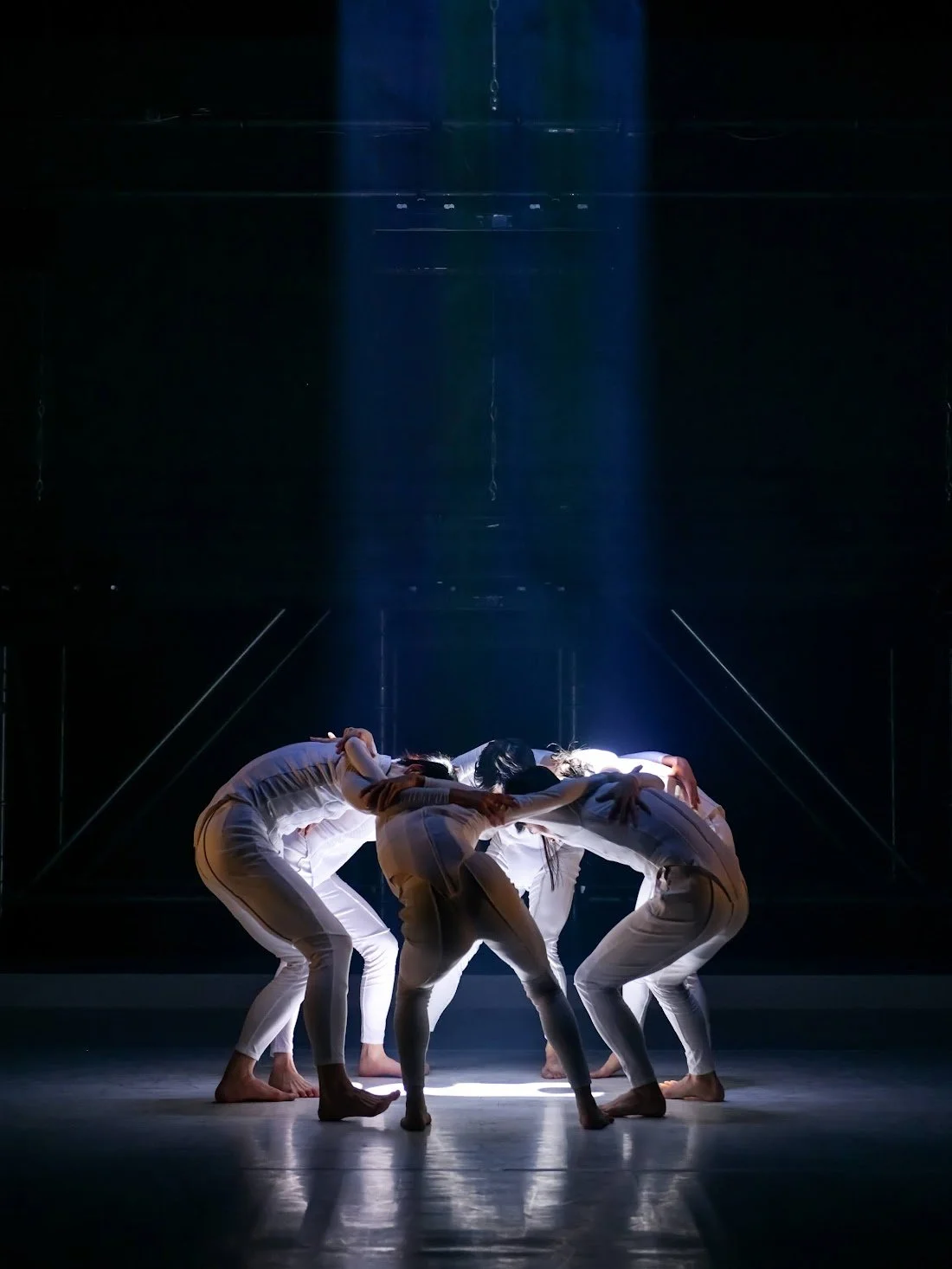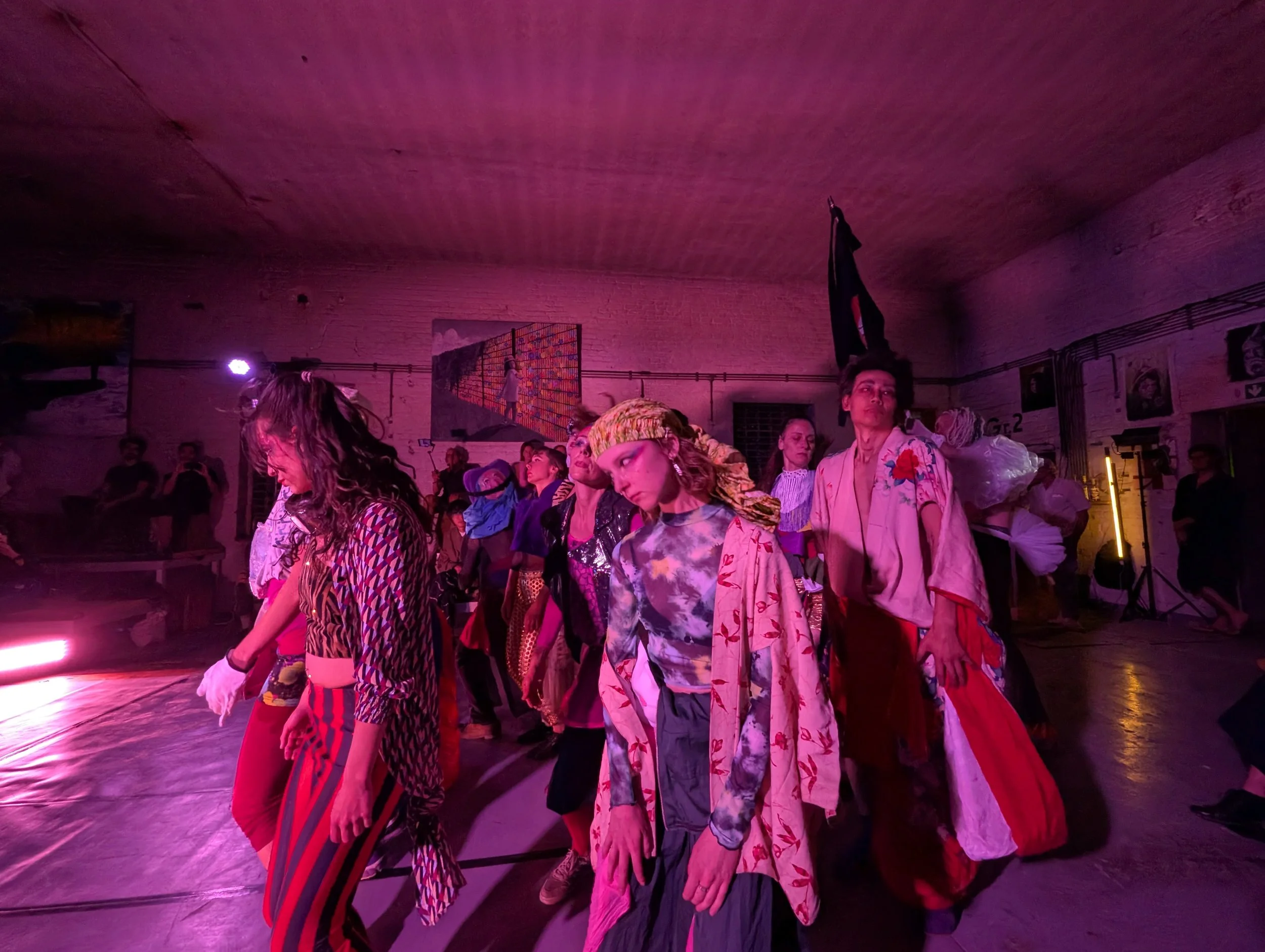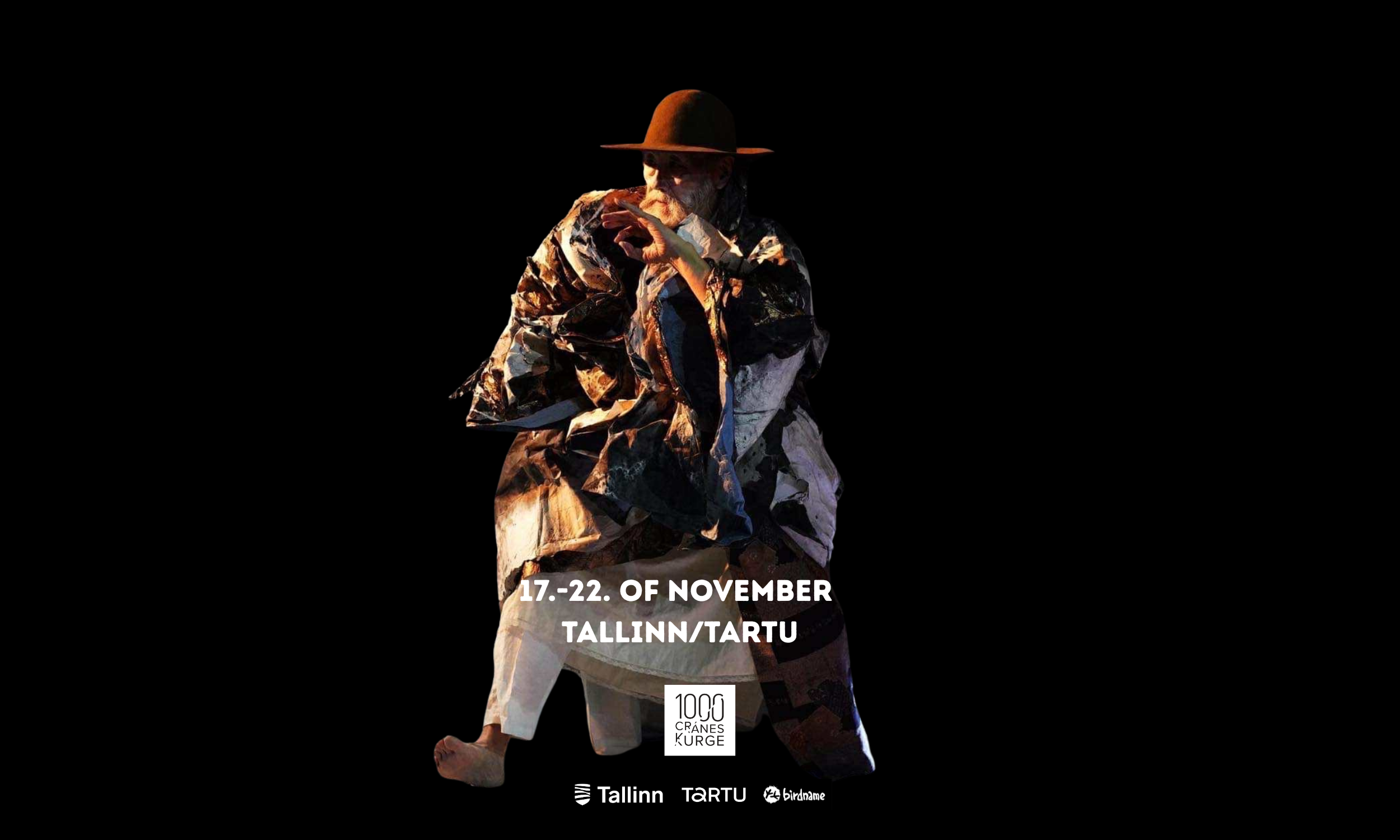
ASIAN WORDLESS THEATER FESTIVAL
The Great Desire of the human heart washes over words… How to express it, how to make your request? A hand finds a paper; a folded crane becomes the messenger bird. Fold one and you are an Artist – you can enjoy the work that you have done; fold a hundred and you are a Master – strong of mind; fold a thousand and you are a Seer – you sense the power of the human heart!The name of the festival – 1000 Cranes – has its roots in a Japanese legend that created a custom to give origami birds to a bride or a new-born to symbolize a long and good life, it also relates to the exquisite attention to detail in the famous Nobel-winning writer Yasunari Kawabata’s novel that carries the same title and embodies the perpetual wanderlust in the human heart.
Dance. Music. Silence.
The Asian Wordless Theatre Festival “1000 Cranes” brings to Estonia a unique selection of contemporary Asian dance and theatre, where movement, sound, and silence intertwine into a poetic whole.
This year, the festival focuses on collaboration and cultural dialogue – presenting works by artists from Japan and South Korea, created in international cooperation with creators from Italy, Lithuania, Germany, and Estonia.
The festival takes place in Tallinn and Tartu, and includes workshops and artist encounters.
Festival Programme:
– Calligraton – Schnitt (Germany/Italy) and Aoi Yamaguchi (Japan) present a poetic audiovisual performance where sound meets calligraphy.
– Cycle of Birth and Death - Isso Miura (Japan) offers a deeply meditative Butoh performance reflecting on the cycles of life.
– KabuKlub – Elektro Kagura (Germany / Japan) fuses the tradition of Kabuki with the energy of contemporary German club culture.
– PISTE: Eight Moments – Modeun Company (South Korea) blends dance and visual art in a performance where light and movement create a living dialogue.
– Bridges / Sillad – a collaborative project uniting artists from South-Korea, Lithuania, Japan, and Estonia, presenting short forms and improvisations on cultural encounters.
The work Fragments of Existence brings together two intimate solos – Centifolia (Marine Fernandez, Lithuania) and Speechless (Heung Won Lee, South Korea).
The evening culminates with Bridges, created jointly by Estonian choreographer Teet Kask, violinist Kristjan Kannukene, and Japanese Butoh master Isso Miura.
Tickets available at Piletilevi.
NB! Discounted tickets available until October 20!
The festival is supported by the City Government of Tallinn and the City Government of Tartu.
Isso Miura (Jp)
Cycle of Birth and Death
The 88-year-old Japanese Butoh master Isso Miura brings to the stage an extraordinary life experience and a deeply warm presence.
His performance speaks of the fragility and intensity of life — of every breath as a gift.
A meeting with Isso Miura is something rare and unrepeatable — time seems to stand still, offering the audience a chance to experience something profoundly human.
Sensei Isso Miura’s Butoh Philosophy
Every time I dance, I do it with the thought that it might be my last.
I enter the space with respect and calm — as if it were the final light, the final sound.
There is no guarantee that the next breath will come, that the heart will keep beating. This awareness does not depend on age — people are mistaken when they believe they are immortal.
That is why every breath, every heartbeat, is a miracle — a gift.
To dance now, in this very moment, without seeking meaning or reward — that is the greatest happiness.
I move in search of my body; sometimes I stop, as if in eternity.
I welcome my body’s weaknesses and pains, sweat together with others, share their breath and microbes — and through silence, we enter another world.
I begin to doubt whether everyday life is truly normal.
Perhaps it is this tense, conscious time within dance that is real — and the everyday world that is false and distorted.
Those brief 30 minutes on stage may be the only true moments in a day — a journey into eternity. That doubt is beautiful, and I no longer wish to return to the careless use of my body in daily life.
That is why I always want be gentle with my body.
But ordinary life urges me to hurry, burying me beneath obligations and destroying stillness.
That is why I long to return to dance — where moments truly meet and vibration arises — my only irreplaceable home: my own body.
Calligraton is a live performance that emerges from the collaboration of the duo Schnitt and Japanese calligrapher Aoi Yamaguchi. The project is developed on two apparently distant forms of expression, experimental sound composition and Japanese calligraphy "shodō".
Shodō: is the art of Japanese calligraphy, which literally means "way of writing". This ancient art form expressed with the creation of Japanese characters, a simple word, an aphorism, a short personal reflection, a poem, goes beyond the simple transmission of meaning by reflecting the spirit of the writer. With a brush on paper, a path is traced that flows from the writer’s inner self, where characters (kanji) and writer become one, representing the calligrapher’s state of mind at the moment of execution.
Schnitt and Aoi Yamaguchi explore in Calligraton the relationship between sound and writing, rhythms, balances, full and empty spaces, sounds and silences confront each other on stage, discovering a profound affinity between sound and sign. The electronic/digital compositional gesture relates to the calligraphic gesture in an intimate conversation that explores the interconnection between the human gesture and the technological element.
Body / Gesture / Action — Shodō as an Art of Movement
Shodō is an art of movement — a dance for both the one who practices it and the one who observes it: a dialogue of gesture, rhythm, speed and stillness, strength and grace.
“The line on the paper, which we see with our eyes, is only a part of the movement that is not seen.
But it is this invisible movement in the void that supports and brings to life the line that we can see.”
— J.K. Kadowaki
Japanese calligraphy requires complete coordination and mastery of the body, posture, breathing, and the brush (fude).
Each line and curve unfolds like a dance, with movements that involve the entire body and create a direct connection between body and paper.
Practicing shodō demands physical discipline that develops over time.
Beyond the repetition of strokes and refinement of technique, the calligrapher learns to control muscle tension, to find the delicate balance between relaxation and strength. Through this repetition, the connection between body and mind deepens, turning the practice into a kind of moving meditation.
The relationship between the body and shodō goes far beyond technical execution.
It becomes a dialogue between the artist’s inner world and the outer one — where the body becomes the medium through which the soul is expressed in brush and ink.
In this way, body, mind, and spirit merge in a creative act that is at once physical and profoundly spiritual.
Sound
In Calligraton, the electronic soundscapes created by Schnitt echo the ideas of Japanese composer Toshio Hosokawa:
“My music is calligraphy painted on the free margin of time and space.
Every single sound has a shape, like a line or a dot drawn with a brush.
These lines are painted on the canvas of silence — and this canvas, the silence itself, must be regarded as equally important as the sounds that emerge.”
— Toshio Hosokawa
In dialogue with an art form entirely free of technology, the rarefied, dense, and compact electronic sounds reveal analogies to the traces left by the brush — decisive or hesitant, fast or slow, thin or thick.
The rhythm of the sound composition intertwines with the rhythm of writing:
sound and gesture step back from the foreground, creating a shared space where silence and expression continuously exchange roles.
This delicate balance defines the pulse and evolution of the entire performance.
Schnitt (De/It) + Aoi Yamaguchi (Jp)
Calligraton
Schnitt
Schnitt is the project of Amelie Duchow, a German experimental musician, and Marco Monfardini, an Italian media artist.
The duo works at the intersection of electronic music, art, and technology, with a strong focus on the cohesion between audio and video.
Audio / Video Performances:
Schnitt develops the projects SYNCHROPATH (2010), an audio/video performance based on synchronism as a method of composition; MEMORYCODE (2016), an audio/video performance focused on visual memory; SCANAUDIENCE(2019), a site-specific audio/video performance developed in collaboration with Gianluca Sibaldi based on real-time audience scanning; and WHITEBALANCE (2022), an audio/video performance based on the interaction between audio/video and the photographic white balance process.
The projects have been presented at international festivals, museums, and European and Asian art centers: Philharmonie de Paris / Biennale Nèmo (France), Mutek (Montreal), LEV Festival (Spain), ACT Festival (South Korea), Elektra Festival (Canada), and ePhil (Germany).
Installations:
MEMORYCAM 1.0 (Reutlingen, Germany, 2012), Architettura Attuale – GROWING BY NUMBERS (Milan, 2011), THE IRRATIONAL CITY (Stazione Santa Lucia, Venice, 2013), and with Gianluca Sibaldi SCANSCAPE (ACC, Asia Culture Center, Gwangju, 2023).
In collaboration with Gianluca Sibaldi, SCHNITT created the interdisciplinary platform EXTRAsync in 2017 — a project focused on audio-visual research. EXTRAsync develops site-specific projects, software, and audio/video devices.
Aoi Yamaguchi
Born and raised in Hokkaido, Japan, Aoi Yamaguchi has been trained to master the basics of calligraphy under Master Zuiho Sato since the age of six, continually refining her knowledge and skills.
She is the recipient of numerous awards, including the First Place Prize from the Minister of Education at the 44th Asahi Calligraphy Nationwide School Exhibit, and Superior First Place at the 33rd National Students Calligraphy Exhibition — both recognized as the highest honors in competitive public exhibitions.
A noteworthy milestone in her early career was her nomination to participate in the 4th Hokkaido Elementary and Junior High Students Visit to China in 2000, where she represented Japan and took part in calligraphy exchange sessions at the Palace of Pupils of China.
Since moving to the United States in 2004, Aoi Yamaguchi has performed and exhibited her work in numerous theatres, museums, galleries, universities, and festivals across the United States, Europe, and Japan. Her works explore the juxtaposition of traditional Eastern classics and contemporary artistic expression, reflecting her unique ambition to transform the two-dimensional art of Japanese calligraphy into a form of physical, performative expression.
Currently residing in Venice, California, Yamaguchi continues to develop her conceptual calligraphy installations, exhibitions, and performances — pushing the boundaries between traditional Eastern aesthetics and contemporary art.
Modeun Company
PISTE: Eight Moments
PISTE: Eight Moments is an interactive media art project that combines dancers’ movements and generative art content. With its motive coming from the motility of fencing, the project visualizes eight moments that face the present into branches of paths. Its visual technology operates real-time, reacting to the space and directed movements and allowing the audience to discover gaps and voids that come up.
Traces of surpassing limits
At a dead end: a body pressing hard, a body avoiding, a body in crisis
There are moments in our lives when we try to secure our ground by pushing into gaps between myself and others. We try to overcome many challenges and reach a certain goal; yet we sometimes feel we are at a dead end. Our lives resemble fencing matches on the limited area of the piste as we keep our eyes out for gaps and moments in the tight space called the world. Moving sets offer eight moments, portraying ourselves struggling to stand ground as we lunge and evade, embodying countless emotions that words cannot express.
Choreographer Modeun Kim
A choreographer who senses the contemporary world through the body and conveys sincerity.
Modeun continues to explore the world through the body, transforming fleeting moments into movement. He delves into the origins of motion and expands the essence and boundaries of contemporary dance through choreography that articulates clear themes in diverse forms. His works, recognized both in Korea and abroad, have won the Best Concept Award in Italy and been invited for screenings and performances in more than 20 cities across Europe, the United States, and South America, including the United Kingdom. Through these activities, Modeun continues to seek new connections between audiences and art.
His representative works include 〈Palm Palm〉 (2024), 〈Thread and Iron: The Strings of the Body〉 (2024), 〈On the Rock〉 (2023), 〈Body String〉 (2023), 〈PISTE: Eight Moments〉 (2022), 〈Modeun Tour: The Way of the Body〉 (2021–23), 〈Blue Breath〉 (2019), 〈GOLIATH in the Water〉 (2017), and 〈Jamais Vu〉 (2017).
Modeun Company
Modeun Company is a contemporary dance company that, true to its name meaning “all” in Korean, embodies an identity rooted in embracing and integrating every form of art. Through a series-based branding approach encompassing sports, tradition, and technology, the company continuously experiments with and realizes the boundless possibilities of contemporary dance. It explores moments of everyday life through movement, expanding them into the language of dance and engaging audiences through its works.Each year, Modeun Company presents new creations and showcases its repertoire on stages both in Korea and abroad. Its creative spectrum spans diverse platforms, including theatre, street performances, dance films, and arts education, broadening the reach and depth of its artistic expression. In addition, through its artist development programs, the company continues to foster a vibrant creative ecosystem, cultivating new generations of artists and expanding the possibilities of contemporary creation.
Performers | KIM Modeun, KIM Minsong, YANG Seungyoon, LEE Sojin, LEE Yerim, CHOI Jeonghong
Media Artist | SONG Zoohyeong
Scenographer | CHOI Sangji
Lighting Designer | LEE Seungho
Music Director | Jimmy Sert
Elektro kagura
KabuKlub (かぶくらぶ)
“Dance is not something to watch ― it’s something to dance.”
ELEKTRO KAGURA presents “KabuKlub”, a performance inspired by traditional Japanese Kabuki dance and merged with Berlin’s club culture.
While traditional Kabuki was performed only by men, its origin traces back to a miko (shrine dancer) named Okuni of Izumo, who overturned gender roles and broke social conventions to create a new form of performance.
Her work emerged between the chaos of the Warring States period and the stability of the early Edo era ― a time when people sang:
“Why live so gloomily? Life is but a dream ― so go mad while you can.”
Kabuki, born from this rebellious kabuku spirit, became wildly popular among the common people, celebrating freedom and transformation amid uncertainty.
In today’s unstable times, that spirit still resonates.
Artistic team
Choreography by Ichi Go and starring Ryota Maeda, the piece actively involves the audience, releasing the raw, primal energy of a Berlin club. Costumes, redesigned from secondhand clothing, are created by Hibiki Kawahara and Regina Gyr (Kostüm Kollektiv e.V.).Music is composed by AXL OTL and performed live.Stage and video design by Yukihiro Ikutani.ELEKTRO KAGURA builds a cultural and temporal bridge between past Japan and the contemporary world, where tradition and club culture meet in dance. The audience is invited to take part in the performance ― and to dance.
Bridges – KR / LT / JP / EE
Short Forms and Improvisations: Encounters Between Cultures
An evening of short forms brings together different cultures and life experiences — dances that speak of life, transformation, and the human condition.
The three works reflect on a universal theme: how our experiences become embodied and shape who we are.
“Fragments of Existence
Fragments of Existence brings together two intimate solos : Centifolia by Marine Fernandez and Speechless by Heung Won Lee, in a shared exploration of humanity, time, and transformation.
Through distinct yet resonant physical languages, the two works reveal how our bodies absorb and express the weight of lived experience, from beauty and ageing to silence and loss.
In Centifolia, Marine questions women’s evolving relationship with their bodies and physical appearance, blending movement, theatricality, and voice to reflect on identity, fragility, and strength.
In Speechless, Heung Won transforms personal memories of collapse and endurance into a visceral choreography where silence becomes both burden and resilience.
Together, these pieces create a delicate dialogue between vulnerability and power, inviting the audience to reflect on how we carry our histories; and how, through movement, we continue to transform.
The evening culminates with “Bridges”, a piece that brings together three generations of performers from Estonia and Japan.
88-year-old Japanese Butoh master Sensei Isso Miura, Estonian choreographer Teet Kask, and violinist Kristjan Kannukene will meet on the stage — in a dialogue that unites generations and life experiences.
